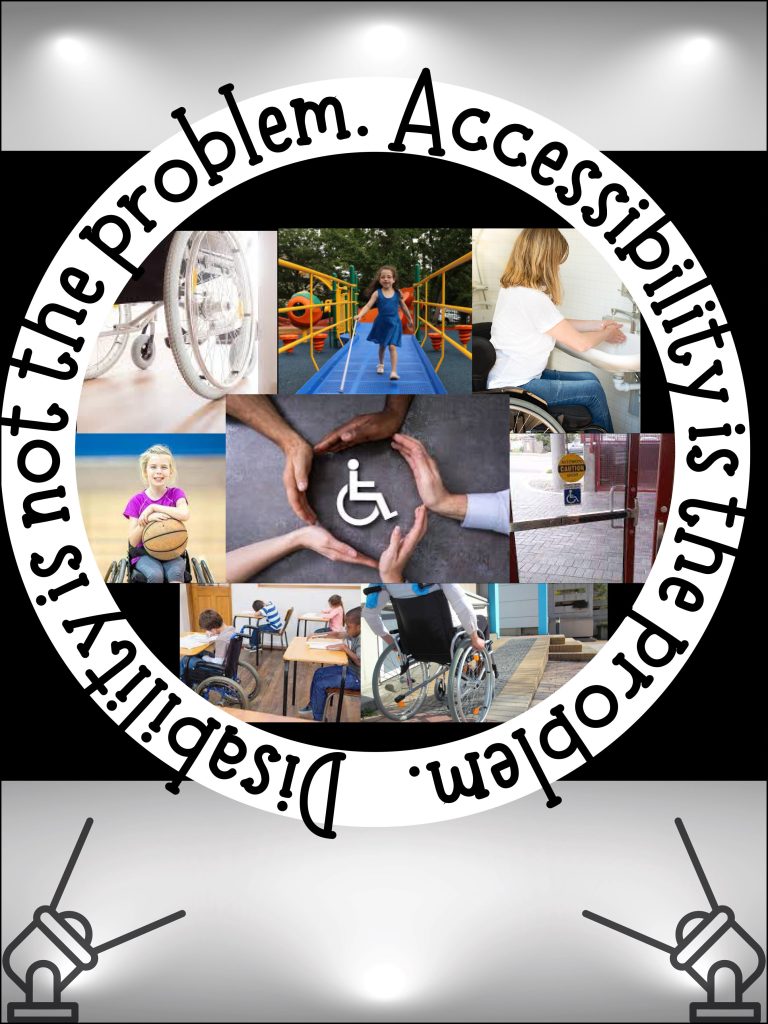9 Physical Accessibility in Schools

By Natalie Waterston
Accessibility remains a significant concern in Ontario schools despite efforts to ensure inclusive learning environments. Students with physical disabilities continue to have difficulty accessing educational services because of physical barriers (Kovac, 2019). For the past 11 years, I have worked as an early childhood educator in a kindergarten classroom. I am particularly interested in this social justice issue because one of my students has Down syndrome. This child faces countless obstacles while navigating our school environment. The collage that I created depicts just a few of the challenges that students with physical disabilities encounter while they are in a school environment.
Some examples of physical barriers include heavy doors, stairs without ramps, small doorways, a lack of elevators, inaccessible restroom features, and overcrowded classrooms, which limit the ability to navigate the physical environment. With these visuals presented, I hope to gain awareness of this social justice issue. Stephens et al. (2015) conducted a study showing that children with physical disabilities face significant barriers in accessing, entering, and navigating school environments. These barriers, which set them apart from their peers, impact their emotional health. Separated entrances, alternate modes of transportation, and segregated restrooms are insufficient accommodations because they only provide partial accessibility and thus increase the child’s anxiety from exclusion (Stephens et al., 2015).
It is necessary to provide an inclusive physical environment that allows students with disabilities to navigate, participate, and transition without being excluded. Schools are designed for students to develop and foster independence, competence and autonomy; why would this not imply to those with physical limitations? Kovac (2019) states that accessibility renovations may be time-consuming and disruptive, but inaccessibility is just as time-consuming and disruptive for students with disabilities. It is essential for Ontario schools to transition towards a more equitable environment for all students.
References
Kovac, L. (2019, September 25). Ontario needs to make more school spaces accessible. Accessibility for Ontarians with Disabilities Act (AODA).
Stephens, L., Scott, H., Aslam, H., Yantzi, N., Young, N., Ruddick, S., & McKeever, P. (2015). The accessibility of elementary schools in Ontario, Canada: Not making the grade. Children, Youth, and Environments, 25(2), 153–175. https://doi.org/10.7721/chilyoutenvi.25.2.0153

